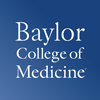Publications
Export 1620 results:
Author Title [ Year ]
] Filters: First Letter Of Last Name is L [Clear All Filters]
Distinct patterns of complex rearrangements and a mutational signature of microhomeology are frequently observed in PLP1 copy number gain structural variants. Genome Med 11, 80 (2019).
Enabling Global Clinical Collaborations on Identifiable Patient Data: The Minerva Initiative. Front Genet 10, 611 (2019).
Enabling Global Clinical Collaborations on Identifiable Patient Data: The Minerva Initiative. Front Genet 10, 611 (2019).
Enabling Global Clinical Collaborations on Identifiable Patient Data: The Minerva Initiative. Front Genet 10, 611 (2019).
Exome Sequencing of a Primary Ovarian Insufficiency Cohort Reveals Common Molecular Etiologies for a Spectrum of Disease. J Clin Endocrinol Metab 104, 3049-3067 (2019).
Exome sequencing of family trios from the National Birth Defects Prevention Study: Tapping into a rich resource of genetic and environmental data. Birth Defects Res 111, 1618-1632 (2019).
Exome sequencing of family trios from the National Birth Defects Prevention Study: Tapping into a rich resource of genetic and environmental data. Birth Defects Res 111, 1618-1632 (2019).
Exome sequencing reveals a high prevalence of BRCA1 and BRCA2 founder variants in a diverse population-based biobank. Genome Med 12, 2 (2019).
Exploring by whole exome sequencing patients with initial diagnosis of Rubinstein-Taybi syndrome: the interconnections of epigenetic machinery disorders. Hum Genet 138, 257-269 (2019).
Exploring by whole exome sequencing patients with initial diagnosis of Rubinstein-Taybi syndrome: the interconnections of epigenetic machinery disorders. Hum Genet 138, 257-269 (2019).
FAM92A Underlies Nonsyndromic Postaxial Polydactyly in Humans and an Abnormal Limb and Digit Skeletal Phenotype in Mice. J Bone Miner Res 34, 375-386 (2019).
FAM92A Underlies Nonsyndromic Postaxial Polydactyly in Humans and an Abnormal Limb and Digit Skeletal Phenotype in Mice. J Bone Miner Res 34, 375-386 (2019).
FAM92A Underlies Nonsyndromic Postaxial Polydactyly in Humans and an Abnormal Limb and Digit Skeletal Phenotype in Mice. J Bone Miner Res 34, 375-386 (2019).
Genetic architecture of laterality defects revealed by whole exome sequencing. Eur J Hum Genet 27, 563-573 (2019).
Genetic architecture of laterality defects revealed by whole exome sequencing. Eur J Hum Genet 27, 563-573 (2019).
Genetic architecture of laterality defects revealed by whole exome sequencing. Eur J Hum Genet 27, 563-573 (2019).
Genetic architecture of laterality defects revealed by whole exome sequencing. Eur J Hum Genet 27, 563-573 (2019).
Genetic regulatory variation in populations informs transcriptome analysis in rare disease. Science 366, 351-356 (2019).
Genetic variants in the LAMA5 gene in pediatric nephrotic syndrome. Nephrol Dial Transplant 34, 485-493 (2019).
Genome Sequencing Identifies the Pathogenic Variant Missed by Prior Testing in an Infant with Marfan Syndrome. J Pediatr 213, 235-240 (2019).
The Genomics of Arthrogryposis, a Complex Trait: Candidate Genes and Further Evidence for Oligogenic Inheritance. Am J Hum Genet 105, 132-150 (2019).
GGC Repeat Expansion and Exon 1 Methylation of XYLT1 Is a Common Pathogenic Variant in Baratela-Scott Syndrome. Am J Hum Genet 104, 35-44 (2019).
Global genetic insight contributed by consanguineous Pakistani families segregating hearing loss. Hum Mutat 40, 53-72 (2019).
Global genetic insight contributed by consanguineous Pakistani families segregating hearing loss. Hum Mutat 40, 53-72 (2019).
Global genetic insight contributed by consanguineous Pakistani families segregating hearing loss. Hum Mutat 40, 53-72 (2019).
Hearing impairment locus heterogeneity and identification of PLS1 as a new autosomal dominant gene in Hungarian Roma. Eur J Hum Genet 27, 869-878 (2019).
Heterozygous CTNNB1 and TBX4 variants in a patient with abnormal lung growth, pulmonary hypertension, microcephaly, and spasticity. Clin Genet 96, 366-370 (2019).
Heterozygous Variants in KMT2E Cause a Spectrum of Neurodevelopmental Disorders and Epilepsy. Am J Hum Genet 104, 1210-1222 (2019).
Heterozygous Variants in KMT2E Cause a Spectrum of Neurodevelopmental Disorders and Epilepsy. Am J Hum Genet 104, 1210-1222 (2019).
Heterozygous Variants in KMT2E Cause a Spectrum of Neurodevelopmental Disorders and Epilepsy. Am J Hum Genet 104, 1210-1222 (2019).
Homozygous Missense Variants in NTNG2, Encoding a Presynaptic Netrin-G2 Adhesion Protein, Lead to a Distinct Neurodevelopmental Disorder. Am J Hum Genet 105, 1048-1056 (2019).
Homozygous noncanonical splice variant in in two siblings with multiple congenital anomalies and global developmental delay. Cold Spring Harb Mol Case Stud 5, (2019).
Hypomorphic caspase activation and recruitment domain 11 (CARD11) mutations associated with diverse immunologic phenotypes with or without atopic disease. J Allergy Clin Immunol 143, 1482-1495 (2019).
Hypomorphic caspase activation and recruitment domain 11 (CARD11) mutations associated with diverse immunologic phenotypes with or without atopic disease. J Allergy Clin Immunol 143, 1482-1495 (2019).
Hypomorphic caspase activation and recruitment domain 11 (CARD11) mutations associated with diverse immunologic phenotypes with or without atopic disease. J Allergy Clin Immunol 143, 1482-1495 (2019).
Hypomorphic caspase activation and recruitment domain 11 (CARD11) mutations associated with diverse immunologic phenotypes with or without atopic disease. J Allergy Clin Immunol 143, 1482-1495 (2019).
Hypomorphic caspase activation and recruitment domain 11 (CARD11) mutations associated with diverse immunologic phenotypes with or without atopic disease. J Allergy Clin Immunol 143, 1482-1495 (2019).
Hypomorphic caspase activation and recruitment domain 11 (CARD11) mutations associated with diverse immunologic phenotypes with or without atopic disease. J Allergy Clin Immunol 143, 1482-1495 (2019).
Identification and therapeutic rescue of autophagosome and glutamate receptor defects in C9ORF72 and sporadic ALS neurons. JCI Insight 5, (2019).
Identification and therapeutic rescue of autophagosome and glutamate receptor defects in C9ORF72 and sporadic ALS neurons. JCI Insight 5, (2019).





